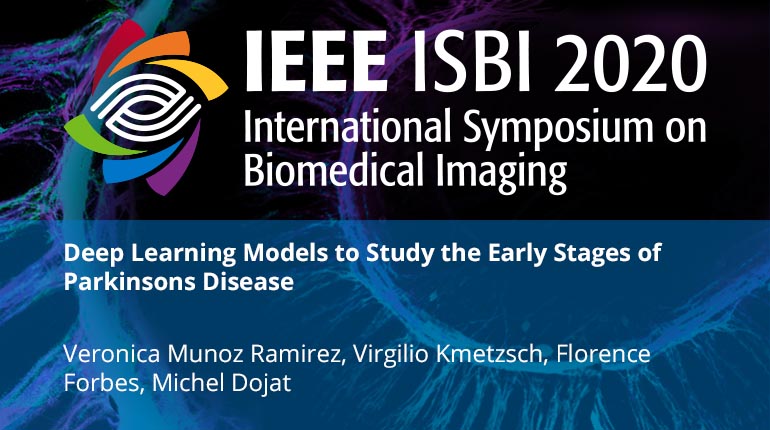
Already purchased this program?
Login to View
This video program is a part of the Premium package:
Deep Learning Models to Study the Early Stages of Parkinsons Disease
- IEEE MemberUS $11.00
- Society MemberUS $0.00
- IEEE Student MemberUS $11.00
- Non-IEEE MemberUS $15.00
Deep Learning Models to Study the Early Stages of Parkinsons Disease
Current physio-pathological data suggest that Parkinson's Disease (PD) symptoms are related to important alterations in subcortical brain structures. However, structural changes in these small structures remain difficult to detect for neuro-radiologists, in particular, at the early stages of the disease ('de novo' PD patients). The absence of a reliable ground truth at the voxel level prevents the application of traditional supervised deep learning techniques. In this work, we consider instead an anomaly detection approach and show that auto-encoders (AE) could provide an efficient anomaly scoring to discriminate 'de novo' PD patients using quantitative Magnetic Resonance Imaging (MRI) data.
Current physio-pathological data suggest that Parkinson's Disease (PD) symptoms are related to important alterations in subcortical brain structures. However, structural changes in these small structures remain difficult to detect for neuro-radiologists, in particular, at the early stages of the disease ('de novo' PD patients). The absence of a reliable ground truth at the voxel level prevents the application of traditional supervised deep learning techniques. In this work, we consider instead an anomaly detection approach and show that auto-encoders (AE) could provide an efficient anomaly scoring to discriminate 'de novo' PD patients using quantitative Magnetic Resonance Imaging (MRI) data.
 Cart
Cart Create Account
Create Account Sign In
Sign In





